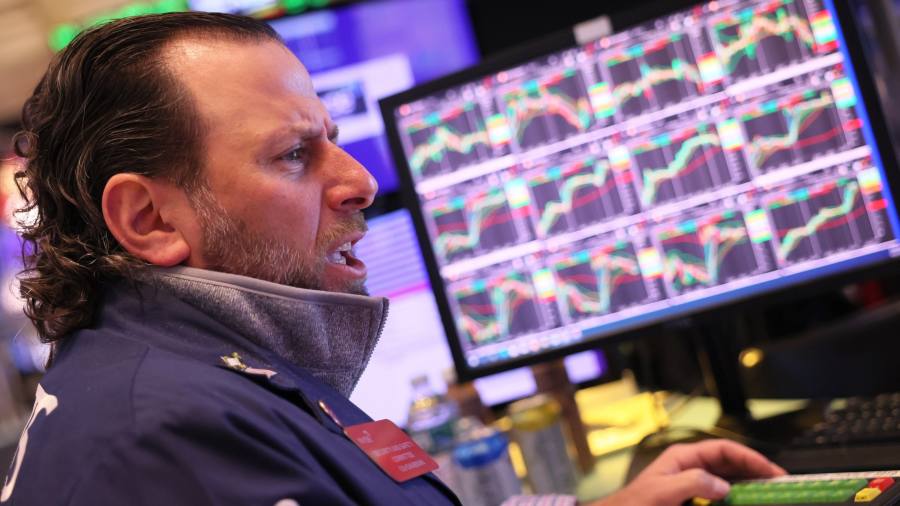
Most Brits of a certain age are familiar with the tale of Michael Fish — a meteorologist who graced our TV screens for decades.
He became a go-to cultural reference point in October 1987 when he said, on a live television weather report, that a woman had called the BBC asking if a hurricane was approaching the generally placid, if rainy, British shores. He calmly assured viewers that no such extreme weather was on its way. Hours later, the Great Storm — the most powerful of its kind to hit the region in centuries — slammed into south-east England, tearing down trees and spreading destruction.
No one wants to be the markets equivalent of this overly-sanguine forecaster, dismissing the chance of disaster, especially now. In March alone, waves of stress have hit the banking systems in the US and Europe. Breathless warnings around the potential for a rerun of the great financial crisis of 2008 are plastered all over the whiffy bits of the internet, but alerts over potentially ugly market outcomes are also dotted across the more sensible corners of investment bank research.
Michael Wilson, a prominent stock market bear at Morgan Stanley, noted last week that the bond market has priced in around a full percentage point of interest rate cuts in the US, starting in June (a tally that has pulled back a little since). “In short,” he wrote, “the bond market seems to be saying the US economy will fall into recession or the banking stresses are far from resolved and will require more explicit Fed action to deal with them . . . We think stocks are next.”
He added that companies’ guidance to investors around likely earnings in the coming months look overly rosy and markets could soon shift to reflect much lower estimates.
Wilson may well turn out to be right. He certainly reflects widespread concern among investors and analysts that the hit to US regional banks this month, seen most prominently in the failure of Silicon Valley Bank, points to a slowdown in bank lending that poses a serious threat to risky assets all over the world. “Credit creation is going to be hurt,” says Peter van Dooijeweert, head of multi-asset solutions at Man Solutions, part of the heavy-hitting hedge fund group.
Meanwhile, we can all pick holes in the nature and timing of the market assault on Deutsche Bank just over a week ago, but it is still worth taking it seriously, says van Dooijeweert. “It was like smoking in the forest surrounded by dry kindling,” he says. It is rather alarmist but not unreasonable to expect that banks in general are challenged by rapidly rising interest rates, for which they have not been stress tested. “If I wanted to start a bear raid on Apple, it’s not going to work out, but if you go after the banks, it’s easy to make enough noise,” he adds.
All this leaves bond prices reflecting likely contractions in lending and blunt monetary assistance from the Fed, says van Dooijeweert, while equities are “whistling past the graveyard” largely untroubled. Investors in one market or the other must be misreading the situation, he adds.
Ajay Rajadhyaksha, global chair of research at Barclays, is clear on which market is out of touch with reality: bonds. “Markets can only focus on one shiny object at a time, and right now it’s banks, banks, banks,” he says. For him, markets are simply too nervous and “the bond market is wrong”.
Just a few weeks ago, the prevailing market mood had switched from “hard landing ahead” in the US economy to “soft landing’” to “no landing” and then, thanks to extremely specific circumstances at SVB, which was shut down by regulators on March 10, back to hard landing again. Earlier this year, Rajadhyaksha says, “we were all wondering why rate hikes were not working” at slowing down the fizzing US economy — especially given the apparently constant stream of positive surprises in jobs data. “Then came March 9 and it’s a complete narrative change . . . We don’t think the world has changed as much as the bond market suggests,” he tells me. “This is a speed bump, not a brick wall.”
Barclays expects the Fed to plump for another quarter-point rise in rates in May, and Marc Giannoni, the bank’s chief US economist, says he would not be surprised to see further hikes after that. “This too shall pass. Fears of a systemic banking crisis are overblown,” the bank said in a note. “But the effects of rate hikes and tighter credit conditions should slow growth in the second half, with the US tipping into recession. Neither bonds nor equities are compelling at current levels.”
So, we are a little stuck until we gather enough information in one direction or another, and markets are likely to remain skittish. “This fragility is a big deal,” says van Dooijeweert.
Jimmy Chang, chief investment officer at the Rockefeller Global Family Office, says the only sensible way to approach investing now is to be “patient, selective and defensive”. This means prizing quality investments and resisting the forces of FOMO (fear of missing out).
“Somewhere in the financial system, some accidents will happen,” he says. “There will be another time to take more risk.”